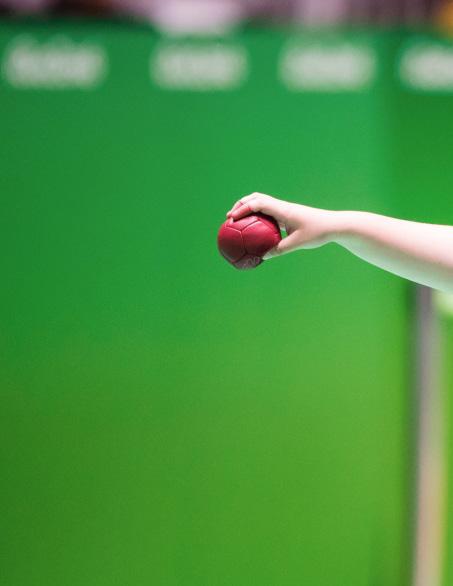
3 minute read
Journey - the parallel issue
from Journey - the parallel issue
by canfund
NATE RIECH - PARA ATHLETICS My Paralympian Story: My life took a dramatic turn the Summer of 2005 after being struck in the head by a golf ball, which resulted in immediate paralysis as well as internal bleeding in my brain. My injury is similar to having a stroke – I had to relearn how to do most things with my non-dominant hand and basic functions, like walking. I was told by many people, including my doctor, to forget about competitive sports because it wasn’t attainable. Proving people wrong and proving myself right became my instant motivation (and I never back down from a challenge). This challenge started my love for running, which has been my stress reliever, passion, and craft that I’ve spent hundreds of hours on. I joined the international scene in 2018, running the 800m and 1500m at the Berlin Grand Prix. I compete in the T-38 Classification, which includes athletes with coordination impairments. The injuries and disabilities which typically make up this classification are CP (Cerebral Palsy) and TBI (traumatic Brain Injury). There are different classes within this classification depending on the extent of your disability. Tokyo will be my debut Para Games!
SHELBY NEWKIRK - PARA SWIMMING My Paralympian Story: Growing up, I tried pretty much every sport other than swimming. When I was 13, I was diagnosed with a neurological progressive movement disorder called generalized dystonia. I lost a lot of my mobility and a lot of my independence quite quickly, and I was no longer able to participate in the sports I loved. When I discovered para swimming, I found that freedom and independence that my disability had taken from me. My dystonia affects all four of my limbs as well as my torso, neck and face. I currently compete in the S6, SB5 and SM6 classes in freestyle, butterfly and backstroke events; breaststroke events; and individual medley events respectively. As my disability is progressive, we often have to re-evaluate how I do my strokes or change things altogether, and it can definitely be frustrating. At times, I feel like I’m constantly starting over, but I have found a love for the water and for the sport. That passion really gives me the motivation to push past the hard times and to really challenge myself to be as competitive as I can be.
KEELY SHAW - PARA CYCLING My Paralympian Story: Before my accident, I was a high-level hockey player with dreams of one day competing at the Games. When I was 15, I fell off my horse and broke a blood vessel in my brain. The injury left me with reduced function and feeling on the left side of my body. I have approximately 70% function in my left leg and approximately 60% function in my right arm. As a result of the injury, I’m considered “spastic”, which means the left side of my body sometimes moves in an uncontrolled manner. I tried a couple of different sports after my accident, but moved more seriously into para cycling in 2016, entering my first road race in 2017. For the first time since I’d been hurt, I started to feel like an athlete again. I am in the women’s C4 classification for Para Cycling. The “C” represents a 2-wheeled bicycle (a typical bike you’d see on the road). The numbers in the C class go from 1 to 5. The lower numbers indicate a greater degree of disability and the higher numbers a lower degree of disability. Tokyo will be my first Paralympics.
DANIELLE ELLIS - SITTING VOLLEYBALL My Paralympian Story: I was diagnosed with Rhabdomyosarcoma at the age of 2 months in December of 1991. I had my right foot amputated in January of 1992 and continued with chemotherapy after my amputation. My parents are both athletes and therefore, instilled in me the belief that no sport was too challenging, enrolling me in gymnastics, baseball, soccer, and volleyball, to name a few! I continued playing soccer and volleyball until the end of high school, and joined the Canadian Sitting Volleyball squad in 2008, at its inception! My classification is an easy one as I am a below-knee amputee. The classification system for sitting volleyball is based on physical impairments to the upper or lower limbs. These impairments can include: amputation, impaired muscle power, athetosis, impaired passive range of motion, hypertonic, limb deficiency, ataxia, or leg limb length difference. I’m proud to be a Paralympian and Tokyo will be my second consecutive Para Games! I am so grateful I grew up in a time where adaptive volleyball has become available. Here’s to hoping it only continues to grow in Canada and around the world!










